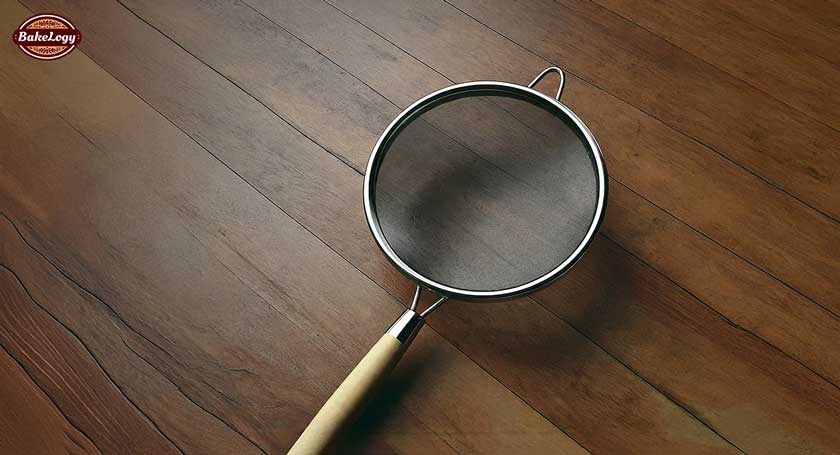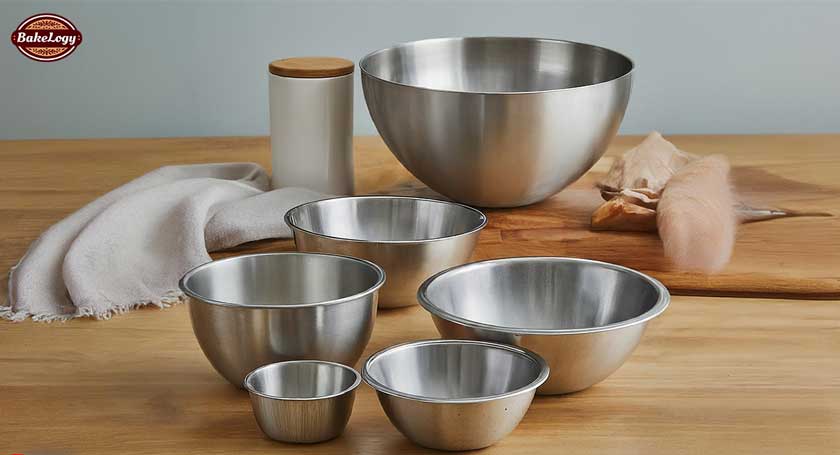Precision and uniformity are essential while baking, and a sieve is a tool that can greatly impact your outcomes. A sieve is an essential tool for any baker’s toolkit, whether it’s for sifting flour, dusting powdered sugar, or filtering sauces. We’ll go over all you need to know about sieves in this post, including kinds, applications, and upkeep.
What is a Sieve?
A sieve, also called a sifter, is a kitchen instrument that can be used to filter, separate, or refine dry or wet foods. It has a mesh screen. The mesh screen is fixed on a frame, usually in a circular shape, and is composed of thin wire or cloth. Sieves are useful equipment for both baking and cooking because they are available in a variety of sizes and mesh grades.
Types of Sieves
- Fine-Mesh Sieve:
- Description: This sieve has a very fine mesh, ideal for sifting flour or powdered sugar. It’s also perfect for straining liquids like sauces or soups to achieve a smooth texture.
- Common Uses: Sifting flour for cakes and pastries, dusting baked goods with powdered sugar, straining sauces and custards.
- Coarse-Mesh Sieve:
- Description: With larger holes in the mesh, this sieve is suitable for separating larger particles from dry ingredients or straining more substantial items like fruit pulp.
- Common Uses: Sifting coarse flours or cornmeal, straining pulpy fruit juices, rinsing grains like quinoa.
- Flour Sifter:
- Description: A specialized sieve with a crank or squeeze mechanism that helps sift flour evenly. It’s designed specifically for aerating flour and ensuring an even distribution of dry ingredients.
- Common Uses: Aerating flour for baking, combining dry ingredients like flour, cocoa powder, and baking soda.
- Chinois (Conical Sieve):
- Description: This conical-shaped sieve is often used in professional kitchens. It has an extremely fine mesh and is great for making ultra-smooth purees and sauces.
- Common Uses: Straining custards, soups, and sauces; creating smooth fruit purees.
How to Use a Sieve in Baking
Sorting Dry Substances:
- Sifting flour, baking powder, and other dry ingredients helps to aerate them, ensuring that they mix well and create a lighter, fluffier baked product. To sift, simply pour the ingredients into the sieve and shake or tap it gently over a bowl.
- To ensure that dry components blend properly and produce a lighter, fluffier baked good, sift flour, baking powder, and other dry ingredients. Pour the ingredients into the sieve, then gently shake or tap it over a bowl to sift.
Dusting Pastries:
- Dusting cakes, cookies, and other baked products with cinnamon, cocoa powder, or powdered sugar works great when done through a sieve. To get a smooth, delicate coating, hold the sieve above the object and gently tap.
Limiting Fluids:
- To get a smooth and silky texture in sauces, custards, or soups, strain any lumps or impurities using a fine-mesh sieve. If needed, push the mixture through the sieve with a spoon after pouring the liquid through it.
- Use a coarse-mesh sieve to rinse grains like quinoa or rice. The sieve allows water to pass through while holding back the grains, ensuring they’re thoroughly cleaned.
Rinsing Grains:
- Use a coarse-mesh sieve to rinse grains like quinoa or rice. The sieve allows water to pass through while holding back the grains, ensuring they’re thoroughly cleaned.
Benefits of Using a Sieve in Baking
- Consistency: Sifting ingredients ensures they’re evenly distributed, which helps create consistent results in your baked goods.
- Texture: A sieve helps remove clumps and lumps from dry ingredients, leading to a smoother batter or dough.
- Precision: When dusting or sprinkling ingredients, a sieve provides better control over the distribution.
- Refinement: Sieving liquids or purees results in a smoother texture, which can elevate the quality of your baked goods.
How to Care for Your Sieve
Proper care and maintenance will extend the life of your sieve and ensure it continues to perform well:
- Cleaning:
- After each use, wash the sieve in warm, soapy water. Use a brush to gently clean the mesh, especially if you’ve been straining sticky or greasy substances. Rinse thoroughly to remove all soap residue.
- Drying:
- Ensure the sieve is completely dry before storing it. Moisture can cause rusting, especially if the sieve is made from metal. You can air dry it or pat it dry with a towel.
- Storage:
- Store the sieve in a dry place, preferably hanging to avoid damage to the mesh. Avoid placing heavy items on top of it, as this can deform the mesh.
- Avoiding Damage:
- Do not use the sieve for tasks it’s not designed for, such as straining very thick mixtures or applying excessive pressure. This can warp or tear the mesh.
Conclusion
A sieve is more than just a simple kitchen tool; it’s a game-changer in baking that ensures your creations are light, fluffy, and free of lumps. Whether you’re a professional baker or a home cook, investing in a good-quality sieve and knowing how to use it can significantly improve your baking outcomes. Happy baking!




